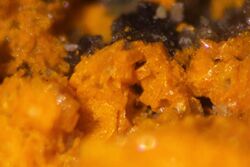Information for "Chemistry:Rakovanite"
From HandWiki
Basic information
| Display title | Chemistry:Rakovanite |
| Default sort key | Rakovanite |
| Page length (in bytes) | 7,177 |
| Namespace ID | 3022 |
| Namespace | Chemistry |
| Page ID | 494744 |
| Page content language | en - English |
| Page content model | wikitext |
| Indexing by robots | Allowed |
| Number of redirects to this page | 0 |
| Counted as a content page | Yes |
| Page image |  |
| HandWiki item ID | None |
Page protection
| Edit | Allow all users (infinite) |
| Move | Allow all users (infinite) |
Edit history
| Page creator | imported>Raymond Straus |
| Date of page creation | 21:39, 5 February 2024 |
| Latest editor | imported>Raymond Straus |
| Date of latest edit | 21:39, 5 February 2024 |
| Total number of edits | 1 |
| Recent number of edits (within past 90 days) | 0 |
| Recent number of distinct authors | 0 |
Page properties
SEO properties
Description | Content |
Article description: (description)This attribute controls the content of the description and og:description elements. | Rakovanite, (NH4)3Na3(V10O28) · 12H2O; formerly given as Na3(H3V10O28).15H2O; later, the ammonium ion was shown to be present and essential, is a member of the pascoite family. It is a transparent, brittle mineral occurring in the monoclinic crystal system. It is orange in color and has an orange-yellow... |
